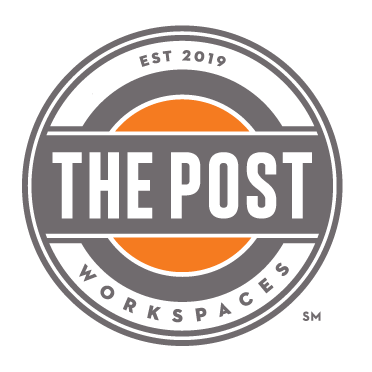
Talk to ten different people about the worst part of meetings and you’ll get ten different answers. They’re a waste of time, they’re boring, it could’ve been an email… or you just walk away feeling unsure of exactly what you were supposed to take away from it.
If you’re a team leader or professional who’s frequently connecting with colleagues and clients, you need to make the most of your meetings. They also need to be sticky—meaning the material and delivery are impactful enough that everyone walks away with a clear understanding of what was discussed and, most importantly, what needs to be done next.
Instead of just showing up to your next meeting and hoping for the best, try some of these tips to ensure attendees take it all in.
How to Get More from Meetings
Before diving into techniques to make your meetings more sticky, you need to make sure they’re worth remembering.
To get more from meetings, try these techniques.
1. Be selective

Don’t try to make all meetings for all things and all people. It’s important to be selective about meetings in three ways:
- People: Make sure that only the people who need to be there are invited.
- Time: No one—we repeat, no one!—operates at their best in a 4:30 p.m. meeting on Friday. Choose a time that works best for everyone.
- Format: Some meetings don’t even need to be a meeting! We’ve all experienced those meetings that could have been an email…
2. Choose the right space

Selecting the right location to hold a meeting will help the attendees get more out of it. If people are comfortable in the space, they can focus on and contribute to the meeting. Here are some things to consider:
- Privacy, including soundproofing.
- Comfort and accessibility—is there enough room for everyone?
- Amenities like IT and presentation equipment or access to a kitchen for longer meetings.
For these reasons, coffee shops and other public spaces generally don’t cut it for a professional meeting. Instead, consider booking a private meeting room that sets you up for success with the space, privacy, and equipment you need.
3. Prepare

Everyone participating in the meeting should be prepared for that meeting. That means:
- Share and read important notes, data, or reports ahead of time.
- Circulate a meeting agenda that outlines the main objectives and meeting goals.
- Show up with everything you need to participate, such as a notebook, iPad, or coffee!
4. Adapt your meeting style

Meetings aren’t a one-size-fits-all solution. You can, and should, identify what type of meeting you need based on what’s being covered. Consider these different meeting types:
- Task status check-in: Needs a 15-minute stand-up meeting.
- New product brainstorm session: Needs a well-planned, short meeting using effective techniques to squeeze some awesome out of the brainstorm.
- Event plan overview: Needs an hour-long meeting to run through the agenda.
Think about what needs to be shared, then adapt the meeting style to match it. This helps engage the right people and they’ll get more out of it.
How to Make Meetings Stickier
Once you’ve made some adjustments to get the most from meetings, you can add in these tips to make them stickier.
1. Set objectives

If there are no objectives for a meeting, you might want to re-consider holding it. Each meeting has a purpose which needs to be communicated to the participants. Objectives of a meeting might sound like this:
- “At the end of the meeting, we’ll brainstorm and decide on three options.”
- “This meeting is to review the annual report and answer questions people have about it.”
These objectives can be identified in the pre-meeting agenda that gets circulated to the participants of the meeting.
2. Use visual aids

People have different learning styles, so incorporating visual aids can help visual learners out. Visual aids can include:
- Videos or presentations—light on the tex.
- Hand-outs and worksheets for participants to take notes on.
- Demonstrations (i.e., if you’re explaining how to do something).
Pro tip: Use some of these best colors for productivity, focus, and concentration in your visual aids to give them a boost.
3. Give context

Participants need context about the meeting and why it’s important to attend. Similar to objectives, this can be shared in a pre-meeting agenda with the participants. Or, it can become part of the regular rhythm of your team’s workflow. For example,
- “We have weekly team meetings to update each other on the status of our projects.”
- “Monthly brainstorm meetings are a way for us to stay creative and innovative.”
4. Reiterate information

Our brains like repetition. We repeat, our brains like repetition. To reiterate information in a meeting you can try a few things:
- Summarize the main points.
- Circulate meeting minutes for everyone to read afterward.
- Use a “pop quiz” (keep it light and fun!) to test participants’ understanding and retention.
5. Go device-free

When possible, encourage participants in the meeting to leave their phones or devices behind. If people are constantly checking their phones, they’re not able to concentrate on the meeting, let alone retain the information for later.
Establishing a phone-free meeting requires buy-in from everyone, so discuss it with your team ahead of time.
6. Encourage questions

People retain information best when participating, not just passively listening. So, actively encourage people to ask questions, seek clarification, and discuss main points. This will help them stay focused during the meeting and also better recall important information later on.
Meetings are an important part of our work lives, but they’re not always effective. To help your team get more out of the meeting—and then help it stick in their memories—try out these tips in your next meeting.
If you’d like to find a fully-appointed meeting space to help you get the most out of your next team gathering, book a tour of The Post today.

